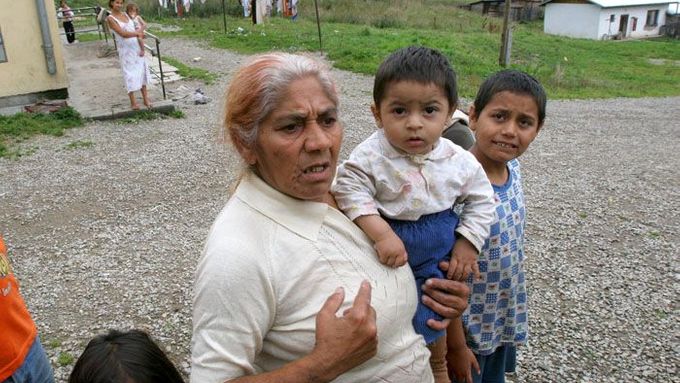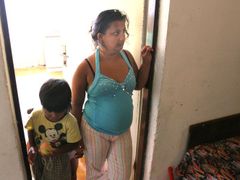Prague - Five billion crowns are waiting in Brussels to be used for development of Czech cities and towns. They can be used for reconstructing panelaks (pre-fab apartment buildings), typical blocks of houses in city outskirts and suburbs including the Romani ghettos.
Before 2015, places with façades that were falling apart, with water leaking in and virtually no playgrounds or green areas should be transformed dramatically.
Out of 16 cities that were approached by Ministry for Regional Development as perfect candidates for financial support to rebuild Romani ghettos, seven cities signed up for the EU money - Brno, Most, Ústí nad Labem, Břeclav, Jihlava and Přerov.
Other cities are planning to request the money as well. Each city will need tens of millions of crowns. Special teams are now investigating what needs to be done and how much it will cost.
Most of the money needed in the North
Most of the finances will be needed in Northern Bohemia where the neediest cities with the highest Romani population are located.
Houses in Předlice near Ústí nad Labem are abandoned, illegal dumping grounds and rats are not rare sight. Two thousand Roma live in the part of the town, and only a few of them have jobs. Many people make money with prostitution, collecting scrap metal or tak out fishy credit from loan sharks. Usury is very common.
Marek Podlaha, head of the governmental agency dealing with ghettos says that Předlice is one of the few real Romani ghettos in the Czech Republic. Its inhabitants will be seeing some changes soon - the city council wants to help improve their situation with a little help of the European money.
"It is a big opportunity. Besides Předlice we also picked another part of the city - Mojžíř," said Václav Groulík from the press department of Ústí nad Labem city council.
Its officials are working on the development plan for the ghettos which is required in the application process for the EU grant.
Based on these plans, private house owners will be able to file their applications, the council itself will apply for money to develop public spaces.
In the meantime, the city council of Litvinov is working on the development plan for Janov, on the western outskirt of the city, which is the biggest Romani locality in the Czech Republic.
Roma residents moved to this part of the city from the center. Their original houses in the center were sold to a private owner who evicted them. Roma no longer live in city housing but the city still has to deal with their housing problems.
"Janov is a big problem for us,"said Monika Černá, the head of the development unit of the city council. It is now up to her, her colleagues, self-management and non-governmental organizations to put together the development plan for Janov.
Not good enough for investment
Přerov is also working on the preparations. Its Roma ghetto is not that big but it still worries the city council. There are three main areas that need reconstructing.
"We have houses at Kojetínská for people who have missed their rent payments. It is one of the most problematic places in town," says Šárka Krákorová-Pajůrková from the city council. The money will be used for different purposes - roof reconstructions, insulation, administration and development of public spaces.
"The houses need internal reconstruction as well but we cannot use the money for that,"says Krákorová-Pajůrková.
Richard Kořínek from People in Need that works in both Přerov and Ústí nad Labem says that the EU money could mean a great opportunity for the ghettos. The city councils themselves have been hesitant to invest in those areas.
"It is a vicious circle because the public assumes that it does not make sense to repair anything because the inhabitants would go ahead and destroy it right away. Since 1990 there have been no investments here," says Kořínek.
"There is a danger that the repaired streets would deteriorate. But something can be done to prevent it," he believes. The city suggests installing camera systems at children's playgrounds as well as appointing superintendents for the houses.
Leaving Bronx without moving
The Brno city council has its big plans too. Areas around Bratislavská, Cejl, Francouzská and Kornerova streets are commonly known as the Bronx. You will not be able to tell them apart from other parts of the city in eight years, the council promises.
Břeclav is not certain yet about what to do with the EU grant. There is no Romani ghettos in the city, however this south Moravian city made it onto the list of potential receipients.
Every locality applying for money should have more than 500 apartments. Not all of them have to be occupied by socially excluded residents, though.
To qualify for the EU investment, cities have to fulfill the following requirements: low real estate prices, low level of energy efficiency, low employment rates, poverty, low levels of education, minority or immigrant population.








